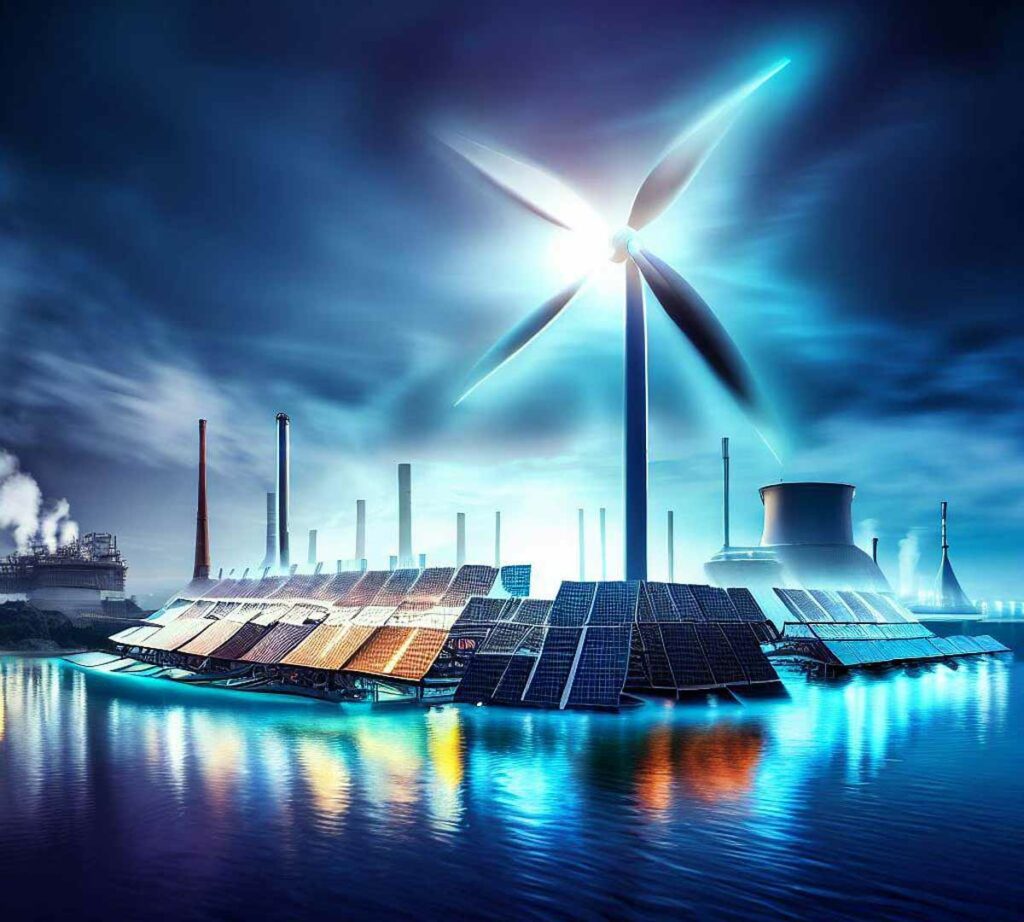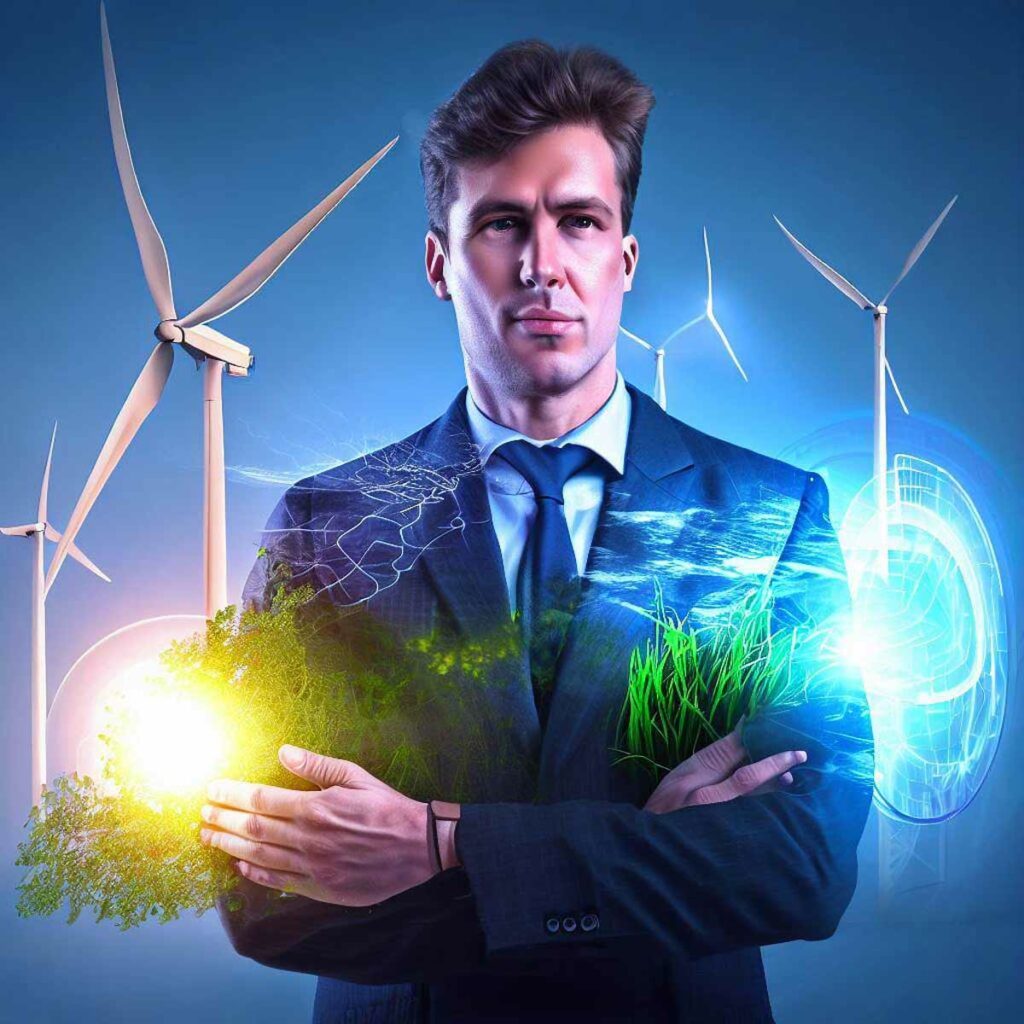Renewable energy has emerged as a vital component in our journey towards a greener and more sustainable future.
With the pressing need to address climate change and reduce our reliance on fossil fuels, renewable energy sources offer a promising solution.
This article will delve into the power of renewable energy, exploring its various sources, advantages, challenges, global initiatives, real-world examples, and future prospects.
Introduction: The importance of renewable energy
In a world grappling with climate change and environmental degradation, the significance of renewable energy cannot be overstated.
Unlike traditional energy sources such as coal, oil, and natural gas, renewable energy harnesses natural resources that are virtually inexhaustible.
By relying on sources that replenish themselves, we can mitigate the negative impact of greenhouse gas emissions and create a cleaner, healthier planet for future generations.

Understanding renewable energy sources
Renewable energy encompasses a range of sources that harness the power of nature. Let’s explore some of the most prominent ones:
Solar power
Solar power utilizes the energy from the sun to generate electricity. Photovoltaic (PV) cells convert sunlight directly into electricity, while solar thermal systems capture the sun’s heat to produce electricity or heat water.
Wind energy
Wind turbines harness the power of the wind’s kinetic energy and transform it into usable electricity. As the wind blows, the rotating blades drive a generator, generating clean and renewable power.
Hydropower
Hydropower utilizes the energy of flowing water, including rivers and tides, to produce electricity.
It involves the use of dams or tidal barrages to capture and direct the force of water to turn turbines.
Geothermal energy
Geothermal energy taps into the heat generated within the Earth’s core. By drilling into geothermal reservoirs, steam or hot water can be used to generate electricity or provide heating for homes and buildings.
Biomass energy
Biomass energy utilizes organic materials, such as wood pellets, agricultural waste, or dedicated energy crops, to produce heat, electricity, or biofuels.
It is a versatile and renewable source of energy.

Advantages of renewable energy
Renewable energy offers numerous advantages that make it an attractive alternative to traditional energy sources. Some of the key benefits include:
Environmental benefits
Renewable energy sources produce little to no greenhouse gas emissions, reducing the carbon footprint associated with energy generation.
They also have a minimal impact on air and water pollution, preserving our ecosystems and improving human health.
Energy security and independence
By diversifying our energy mix and reducing dependence on fossil fuels, renewable energy enhances energy security.
It decreases our vulnerability to geopolitical conflicts and price fluctuations, providing a stable and reliable energy supply.
Economic opportunities
The renewable energy sector has the potential to create jobs and stimulate economic growth.
From manufacturing and installation to maintenance and research, the industry offers employment opportunities across various skill levels.
Overcoming challenges in renewable energy adoption
While renewable energy holds great promise, certain challenges must be addressed for widespread adoption. These include:
Initial costs and investment
The initial investment required for renewable energy projects can be higher compared to conventional energy infrastructure.
However, as technology advances and economies of scale are achieved, costs continue to decline, making renewable energy increasingly affordable.
Technological advancements
Ongoing research and development are crucial for improving the efficiency and performance of renewable energy systems.
Breakthroughs in areas such as solar panel efficiency, wind turbine design, and energy storage can accelerate the transition to renewable energy.
Grid integration and storage solutions
Intermittency is a challenge for certain renewable energy sources like solar and wind, as their generation depends on weather conditions.
Enhancing grid integration and developing effective energy storage solutions are key to balancing supply and demand and ensuring a reliable power supply.
Global initiatives promoting renewable energy
The importance of renewable energy is recognized worldwide, leading to various global initiatives and commitments. These include:
Paris Agreement
The Paris Agreement, adopted by nearly all nations, aims to limit global warming to well below 2 degrees Celsius and pursue efforts to limit the temperature increase to 1.5 degrees Celsius.
Renewable energy plays a crucial role in achieving these targets.
United Nations Sustainable Development Goals
The United Nations has set 17 Sustainable Development Goals (SDGs) to address global challenges.
Goal 7 focuses on ensuring access to affordable, reliable, sustainable, and modern energy for all, with an emphasis on renewable energy sources.
National renewable energy targets
Many countries have established renewable energy targets to increase the share of clean energy in their energy mix.
These targets provide a framework for policy development, investment, and technological advancements.
Real-world examples of successful renewable energy projects
Across the globe, numerous successful renewable energy projects are demonstrating the viability and effectiveness of sustainable solutions. Some notable examples include:
Solar farms and rooftop installations
Large-scale solar farms, such as the Tengger Desert Solar Park in China and the Bhadla Solar Park in India, showcase the potential of solar energy.
Additionally, rooftop solar installations on residential and commercial buildings enable individuals to generate their own clean energy.
Wind farms and offshore wind turbines
Wind farms like the Gansu Wind Farm in China and the Alta Wind Energy Center in the United States harness the power of wind to generate electricity on a large scale.
Offshore wind turbines, such as those in the North Sea, capitalize on stronger and more consistent winds.
Hydroelectric power plants
Hydropower plays a significant role in countries like China, Brazil, and Canada. The Three Gorges Dam in China and the Itaipu Dam on the border of Brazil and Paraguay are prime examples of hydroelectric power plants that generate substantial amounts of renewable energy.

The future of renewable energy
As technology continues to advance, the future of renewable energy looks promising. Key areas of development include:
Advancements in solar panel efficiency
Researchers are working on enhancing the efficiency of solar panels to capture more sunlight and generate greater amounts of electricity.
Innovations like perovskite solar cells and tandem solar cells show considerable potential.
Innovation in wind turbine design
Efforts are underway to develop more efficient and cost-effective wind turbines.
Advancements in aerodynamics, materials, and turbine size enable higher energy output and better performance in diverse wind conditions.
Expansion of battery storage systems
Battery storage systems are crucial for storing excess renewable energy and balancing the intermittent nature of certain sources.
Advancements in battery technologies, such as lithium-ion batteries and flow batteries, are driving the expansion of storage capacity.
Conclusion
The power of renewable energy lies in its ability to provide sustainable and environmentally friendly solutions for our energy needs.
Through harnessing the potential of solar power, wind energy, hydropower, geothermal energy, and biomass energy, we can reduce carbon emissions, enhance energy security, and create economic opportunities.
While challenges exist, global initiatives and real-world success stories demonstrate the progress being made.
As we continue to innovate and invest in renewable energy, we pave the way for a greener future and a more sustainable planet.
FAQ
Renewable energy costs have significantly decreased over the years and are now competitive with or even cheaper than fossil fuels in many cases. Additionally, renewable energy offers long-term cost stability and environmental benefits.
Yes, renewable energy sources have the potential to meet global energy demand. The vast availability of renewable resources and ongoing technological advancements make it feasible to transition to a predominantly renewable energy system.
While renewable energy sources offer numerous benefits, they do have some drawbacks. Intermittency and reliance on weather conditions can pose challenges, and certain technologies may have specific environmental impacts. However, ongoing research and innovation aim to address these limitations.
Individuals can contribute to the growth of renewable energy by installing solar panels on their rooftops, supporting renewable energy projects, advocating for renewable energy policies, and practicing energy conservation in their daily lives.

